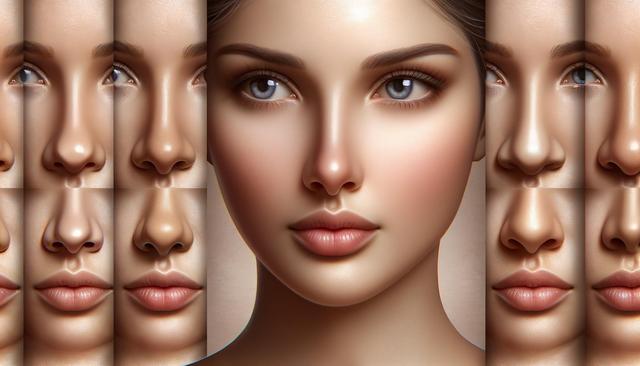Understanding the Growing Popularity of Rhinoplasty
Rhinoplasty, commonly referred to as nose reshaping surgery, is experiencing a noticeable rise in popularity. One of the key reasons behind this trend is the increasing social acceptance of cosmetic procedures. With more people sharing their experiences openly on digital platforms, the stigma once associated with aesthetic surgeries is diminishing. Additionally, the widespread availability of advanced imaging technology allows individuals to preview potential outcomes, making the decision-making process more informed and confidence-based.
Another significant factor is the influence of video conferencing and social media. As people spend more time looking at themselves on screens, especially in close-up views, they become more aware of facial features they might want to adjust. This self-awareness, coupled with the desire for natural-looking enhancements, has driven many to explore nose reshaping options. Furthermore, medical advancements have led to more precise and less invasive procedures, which appeal to those hesitant about traditional surgery.
Different Types of Nose Reshaping Options
There are several options available for individuals considering nose reshaping, each catering to different needs and preferences. The most well-known method is surgical rhinoplasty, which involves altering the bone, cartilage, or skin of the nose. This can be done for aesthetic reasons, such as refining the nasal tip or straightening a bridge, or for functional purposes, such as improving breathing through septoplasty.
Non-surgical alternatives have also gained traction. These include dermal fillers that provide temporary contouring and can address minor asymmetries. While not permanent, these procedures are attractive due to minimal downtime and immediate results. Some common nose reshaping options include:
- Open Rhinoplasty – Provides better access for complex reshaping tasks
- Closed Rhinoplasty – Involves fewer incisions and typically faster recovery
- Revision Rhinoplasty – Corrects or refines results from a previous surgery
- Non-surgical Rhinoplasty – Uses injectables for subtle reshaping
Knowing which method suits a person’s needs often depends on goals, anatomy, and medical history. Consulting with a qualified specialist is essential for evaluating appropriate paths forward.
Benefits Beyond Aesthetics
While many people seek nose reshaping for cosmetic reasons, there are functional benefits that shouldn’t be overlooked. A reshaped nose can improve airflow, alleviate breathing difficulties, and correct congenital or injury-related deformities. These medical motivations are a significant aspect of why rhinoplasty remains a relevant and sought-after procedure.
Functional rhinoplasty often includes:
- Repairing a deviated septum
- Correcting nasal valve collapse
- Addressing trauma-related damage
Patients who undergo rhinoplasty for medical reasons often experience improved sleep quality, better physical performance during exercise, and reduced instances of sinus infections. These outcomes contribute to the overall quality of life and explain part of the procedure’s growing appeal.
What to Consider Before Choosing a Procedure
Deciding to undergo nose reshaping, surgical or otherwise, involves several considerations. First and foremost is the motivation behind the decision. Clear and realistic expectations are key to satisfaction with the final result. It’s important to discuss desired changes with a qualified practitioner who can assess feasibility and recommend suitable techniques.
Additional factors to think about include:
- Recovery time – Surgical options typically require longer healing periods
- Cost – Non-surgical procedures can be more affordable but are temporary
- Risks – Like any medical procedure, risks should be weighed and understood
- Longevity – Surgical changes are generally permanent, while fillers are not
Being well-informed helps mitigate potential disappointments and supports a more positive experience throughout the reshaping journey.
The Role of Personalization in Modern Rhinoplasty
Modern nose reshaping places a strong emphasis on personalization. Rather than striving for a one-size-fits-all appearance, today’s procedures focus on enhancing natural features while maintaining facial harmony. Surgeons now use 3D imaging and simulation tools to plan procedures tailored to each individual’s anatomy and preferences.
This personalized approach extends to cultural and ethnic considerations, where maintaining identity and heritage plays a crucial role. Surgeons take care in preserving unique characteristics while making subtle refinements. The goal is to achieve a result that looks natural and feels authentic to the individual.
In addition, collaboration between patient and provider has become central to the process. By fostering open communication, patients can express their goals clearly, and providers can set realistic expectations. This shared understanding is a cornerstone of successful outcomes and patient satisfaction.
Conclusion: Choosing the Right Nose Reshaping Path
For those considering nose reshaping, the growing range of options—from surgical to non-invasive—offers more flexibility and control than ever before. With increased awareness, improved techniques, and a shift toward personalized results, individuals can now make more informed decisions that align with both their aesthetic preferences and functional needs. Whether driven by appearance, health, or both, pursuing nose reshaping is a highly personal journey that benefits from careful planning and professional guidance.




Leave a Reply